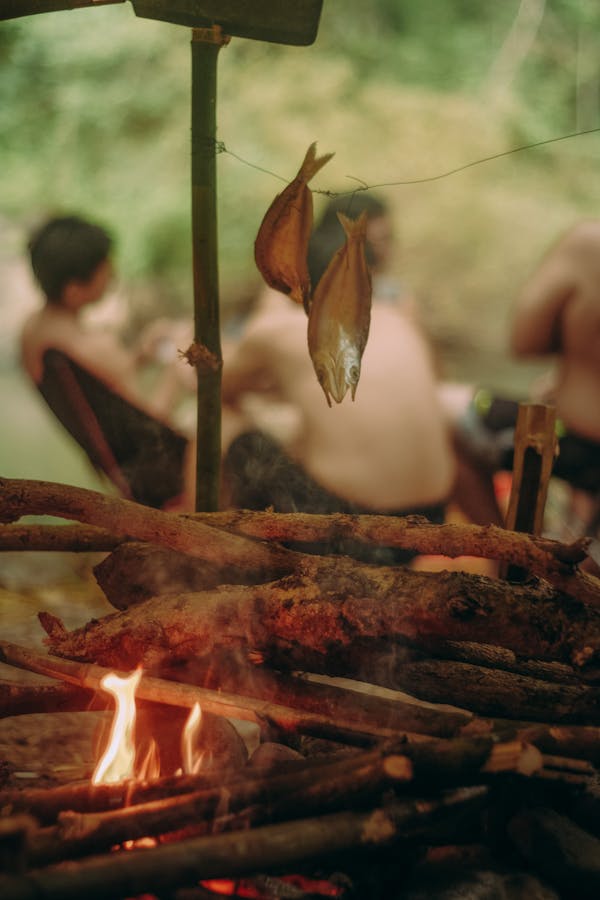Bushcraft – An Ancient Survival Skill That Fosters Resilience and Self-Reliance
Bushcraft is an ancient survival skill that helps you thrive in outdoor environments. It fosters a deeper connection with nature and cultivates resilience and self-reliance.
It’s important to plan ahead for your bushcraft trip and know how to meet basic needs. This includes learning friction fire-starting techniques and building shelters from natural materials.
Basics
Bushcraft is about intentionally living closer to nature, not just surviving a wilderness emergency. It’s often used as a pastime and shares many similarities to rural preppers, from camping trips to day trips into the woods to building shelter of greater complexity to using natural resources for cooking, water, tools and more.
It also involves re-learning forgotten skills, like how to craft tools from wood and how to use ancient techniques, such as flintknapping (which involves shaping stones to make useful tools) or the clove hitch, which is perfect for tying tarps to branches. Find out more at Bushcraft courses.
Having a good survival knife is an essential part of bushcraft, as it can be used for everything from starting a fire to preparing and hunting food. It’s important to use a full-tang knife and one that is made from a hard material, like steel or wood, to ensure it’s durable enough for the tasks at hand. In addition, a sheath of some kind is usually recommended to protect the blade.
Shelters
A survival shelter is one of the first things you should build in a wilderness emergency. It will offer protection from hypothermia, which is a primary threat in such situations.
Debris huts are simple to build and work well in most conditions. The best base is a fallen tree or large rock that can act as a ridgepole. Logs or saplings positioned at a slant can form the walls of the shelter. A wickiup, which is like a tipi but has a dome construction, provides good protection against wind and rain.
You can also use tall grass, cattail down or boughs for insulation. These materials have air trapped between their cells, making them effective insulators. Thatching, which is a layer of branches that covers the framework of your shelter, can also make it windproof. This will prevent cold winds from blowing through the opening of your shelter. In addition, you can heat rocks and drag them into your shelter to reflect the fire’s heat back inside.
Food
The term bushcraft often conjures up an image of a Ray Mears-style survival expert, face smeared with camouflaging mud, stalking game in the forest with his homemade bow and eating roast lamb over a campfire. This is a very limited view of the outdoor skills that can be learned with this lifestyle, however.

In reality, bushcraft is a much more broad outdoors trend that encompasses everything from hunting to gathering and cooking. It emphasizes sustainability and self-reliance in harmony with the natural environment. It also fosters a connection with nature and a respect for the traditions of our ancestors.
One of the most important aspects of bushcraft is knowing how to prepare food. This includes not only knowing which plants are safe to eat, but also how to cook them. One popular method is steaming. To do this, simply wrap your food in non-poisonous leaves and then cover it with a layer of mud or clay that is sticky but firm. This can then be buried in the embers of your fire and cooked through.
Tools
While the idea of bushcraft may conjure images of a Ray Mears-style survival expert, with camouflage mud on his face and a homemade bow in hand, the practice is about more than just gear. It’s about building a solid foundation for wilderness survival, including how to hunt, find and purify water, make shelter, and carve tools.
The first and foremost tool for any skilled bushcrafter is a knife. From striking sparks to start a fire, hacking away brush and saplings for shelter material, or carving out other tools, nothing cuts like a well-wielded blade. A knife with a full tang is often preferred, as the steel extends all the way through the handle, making it more durable.
Another basic bushcraft tool is a sun compass. Created by marking the tip of a stick against the ground and drawing a line perpendicular to it, this can help you navigate in the wilderness. You can also use a knife to create trail markers, carving symbols and arrows into trees or other natural features.